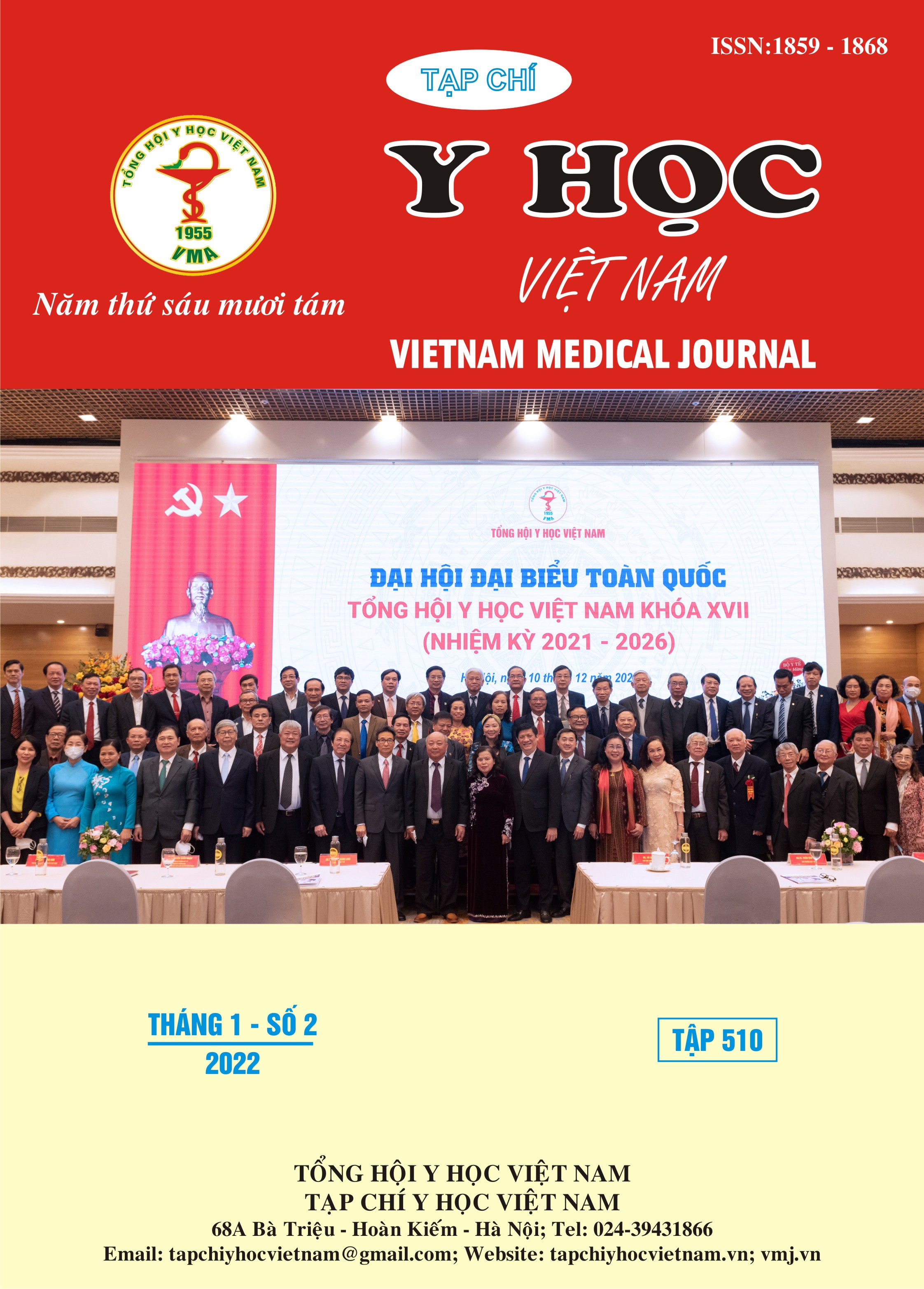ENDOSCOPIC MEASUREMENTS OF THE ANTERIOR SKULL BASE DIMENSIONS IN VIETNAMESE ADULT CADAVERS
Main Article Content
Abstract
Objectives: Measuring the anterior skull base dimensions (length and width) endoscopically in Vietnamese cadavers and finding the correlation between them. Methods: Ten Vietnamese adult cadavers were dissected endoscopically. Anatomical dimensions of the anterior skull base were measured such as anterior skull base length (posterior table of frontal sinus to planum sphenoidale) and width (orbit to orbit) at the level of the anterior ethmoidal artery (AEA), posterior ethmoid artery (PEA) and the anterior wall of the sphenoid sinus. Results: The average length of anterior skull base is 32,33±4,72mm. The width at the level of AEA, PEA and anterior wall of the sphenoid sinus are 23,75±1,42mm; 25,90±2,70mm and 26,85±1,66mm, respectively. These dimensions are greater in male than female cadavers. The average width at AEA is the shortest and at the anterior wall of the sphenoid sinus is the longest. There is a tight correlation between the skull-base length and width at the level of AEA. Conclusions: Identifying the bounderies of anterior midline skull base endoscopically and protecting medial orbital wall and the optic nerve are important for safe surgery. Endoscopic measurement of the anterior midline skull base dimensions can be useful in reconstructing anterior skull base defects and estimating the anterior skull base window size in anterior cranial fossa tumors resection.
Article Details
Keywords
Endoscopic approach to the anterior skull base, anterior skull base dimensions, anterior skull base anatomy
References
2. Batra Pete S, Kanowitz Seth J, Luong Amber (2010), "Anatomical and technical correlates in endoscopic anterior skull base surgery: a cadaveric analysis", Otolaryngology-Head Neck Surgery, 142 (6), pp.827-831.
3. Cavallo Luigi M, Messina Andrea, Cappabianca Paolo, et al. (2005), "Endoscopic endonasal surgery of the midline skull base: anatomical study and clinical considerations", Neurosurgical focus, 19 (1), pp.1-14.
4. Jho H-D, Ha H-G (2004), "Endoscopic endonasal skull base surgery: Part 1-The midline anterior fossa skull base", min-Minimally Invasive Neurosurgery, 47 (01), pp.1-8.
5. Nicolai Piero, Battaglia Paolo, Bignami Maurizio, et al. (2008), "Endoscopic surgery for malignant tumors of the sinonasal tract and adjacent skull base: a 10-year experience", 22 (3), pp.308-316.
6. Park Sung Joon, Kim Hyun‐Jik, Kim Dong‐Young, et al. (2017). Radioanatomic study of the skull base and septum in Asians: implications for using the nasoseptal flap for anterior skull‐base reconstruction. in International forum of allergy & rhinology. Wiley Online Library.
7. Sargi Zoukaa, Casiano Roy R. (2017), "Anterior Skull base resection. ", Endoscopic sinonasal dissection guide (including orbit and skull base), 2nd ed, Thieme, New York, chapter 29, pp.108-113.
8. Wang Shousen, Lv Jian, Xue Liang, et al. (2014), "Anatomic study and clinical significance of extended endonasal anterior skull base surgery", Neurology India, 62 (5), pp.525.
9. Wormald Peter-John (2018), "Endoscopic Resection of Anterior cranial Fossa Tumors", Endoscopic Sinus Surgery 4th ed, Thieme Medical Publishers, New York, chapter 20, pp.273-289.
10. Wormald Peter-John (2018), "Setup and Ergonomics of Endoscopic Sinus Surgery", Endoscopic Sinus Surgery, 4th ed, Thieme, New York, chapter 1, pp.1-5.


